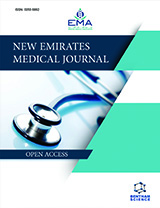Abstract
Background: Heart transplantation remains the treatment of choice for end-stage heart failure patients, owing to the associated dual improvements in quality of life, and prognosis. The discrepancy between higher demand and supply of donor organs is the limiting factor, and is established universally. Increasing consideration of donor populations up to 65 years of age and marginal donor hearts has helped to facilitate the availability of potential grafts. However, grafts from older donors carry the mid-term increased risk of coronary allograft vasculopathy, including donor-transmitted coronary disease.
Case report: A 15-year-old female underwent orthotopic heart transplantation for non-ischaemic cardiomyopathy, the donor was a 44-year-old male. The recipient developed anterior wall ischaemia within a year requiring coronary angioplasty and stent implantation to treat the severe obstruction in the left anterior descending coronary artery. However, two months later, the patient was readmitted with in-stent restenosis. Therefore, to optimally revascularise the left anterior descending coronary artery, and minimise risks associated with re-sternotomy, a minimally invasive direct coronary artery by pass grafting of the left internal mammary artery to the left anterior descending artery was performed.
Conclusion: Surgical revascularisation in generalised coronary allograft vasculopathy is an inadequate option; repeat heart transplantation is the treatment of choice, albeit given its morbidity, should be reserved for a highly selected patient population. In localised coronary lesions, conventional coronary bypass surgery may be a feasible choice in selected patients with left anterior descending artery lesions. Minimal invasive techniques, such as minimally invasive direct coronary artery bypass grafting rather than robotic techniques, would be preferable for ease of approach and to limit the surgical re-do trauma.
Keywords: Heart transplantation, Donor transmitted coronary disease, Surgical revascularisation, Minimally invasive, MIDCAB, MyocardialIschaemia.






























